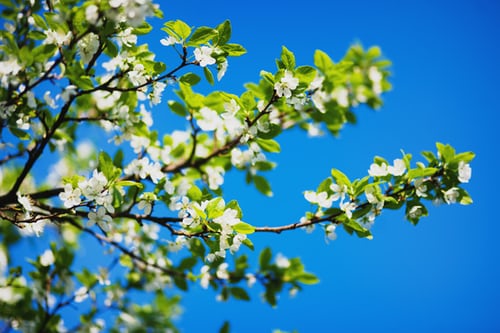5 Benefits Of Tree Trimming
By David William
Homeownership is a huge investment, and with any investment, the first priority is making a profit. One of the easiest ways to add tremendous value to your property is planting some trees. Trees create curb appeal, provide shade during summer, and act as buffers against cold winds in the winter. These improved living conditions can make your buildings more attractive to potential buyers.
But your trees must be properly maintained to make a profitable property sale, and one way to achieve this is trimming them regularly. Here we look at some of the many benefits of tree trimming and when to do it to keep your property livened up until it's time to sell. Read on for more information!
What Is Trimming?
Trimming is a tree care procedure that involves selectively cutting and removing unwanted parts of a tree. It promotes new growth, prevents rot and decay, improves the tree structure, and generally keeps the tree in tiptop condition.

However, since each cut will potentially change how the tree grows, trimming must be done skillfully, with a good understanding of tree biology. Improper trimming can cause irreversible damage, or even shorten the lifespan of the tree. If you haven't trimmed a tree before, it would be wise to enlist the services of an expert.
Types of Tree Trimming
There are four types of tree trimming, each meant to serve a specific purpose. Which one you choose will depend on what you hope to achieve:
Deadwooding: Trimming to get rid of dead, dying, and decaying limbs. It is the most common and should be performed on a regular basis to keep the trees safe and healthy.
Thinning: Selectively removing excess leaves and branche s to allow wind and air to pass through the canopy. This not only minimizes the risk of falling or branches breaking during storms, but also allows sunlight to reach the vegetation below the tree.
Canopy raising: Cutting off the lower limbs to lift the canopy of the tree. In most instances, it is done to raise trees above driveways/walkways, remove an obstruction, or allow sunlight to reach the plants underneath the canopy.
Canopy cleaning: A more thorough type of trimming whereby the climber removes all deadwood, suckers, and sprout growth, leaving only the secondary branches of the trunk. Canopy cleaning is mainly done to maintain a continuous supply of small diameter poles. It starts when the tree is still in its young stages and is performed regularly throughout the lifespan of the plant.

Benefits of Tree Trimming
- Ensures Health
When left without proper care, trees can grow wildly and get denser than what is actually healthy for them. And when the canopy gets too thick, sunlight penetration becomes a problem, hindering the process of photosynthesis. This means the plant is not able to feed as it should, which ultimately affects its health.
A dense canopy also prevents proper air circulation, creating an ideal environment for the breeding of tree fungi. Trimming removes excess leaves and branches, allowing adequate sunlight penetration and air circulation, which keeps your trees growing healthy and vibrant.
- Promotes New Growth
As trees grow, their branches can die, break, or become diseased over time. To keep these parts from falling, hampering the plant's growth, or infecting healthy areas of the tree, experts recommend that property owners trim their greenery regularly. By getting rid of these problem areas, you can help prevent potential danger and at the same time fuel new, healthy growth.
- Maintains a Safe Property
Trees close to the house, pool, garage, or driveway need to be trimmed regularly to remove branches that could fall and cause damage to your property or seriously injure someone. Trees near utility lines are also risky. Trimming helps get rid of high-risk limbs and branches, ensuring a safe property.
- Improves Appearance
Trees that are not trimmed regularly can grow to look bushy and unbalanced. Limbs may grow in strange directions, causing uneven growth and making your trees appear unkempt.
Think of trimming like a haircut, one that enhances the appearance and natural shape of your trees. Cutting back clumsy branches is beneficial, as it improves the overall tree's appearance. This is especially important if you planted the trees for aesthetic purposes.
- Encourages Fruit Production
If you have fruit trees on your property, you can trim them in the winter to stimulate more growth in the spring and summer. When the volume of leaves and branches is reduced, the tree is able to put its excess energy into producing more fruit.
When to Trim?
Now that you are aware of the benefits of tree trimming and the different types of cuts you can perform to get the most out of your greenery, let's see why some seasons are considered more effective for tree trimming than others. Ready?
Winter
If you want to boost the growth of your trees, do your trimming in the winter. Trimming the trees in the cold season helps them heal faster because they are dormant. It also ensures less bleeding of the sap.

Fall
Avoid trimming trees in the fall, as they take more time to heal and can develop an infection in the process.
Summer
Unless you want to slow down tree growth or fruit production, do not trim your trees in summer either. Late winter is the best time to trim fruit trees as it prepares the tree for fruit production in the spring.

Spring
Trimming the trees in the spring generally limits their flowering potential for the year. It also leaves wounds open, longer, putting the trees at risk of disease and insect infestation. But you can still do safe spring trimming - as long as you don't cut off more than ten percent of the tree canopy in the process. Some spring-flowering trees can be trimmed right after they bloom.
To save on tree trimming, consider having the job done in the winter. This is because tree trimming service in New York is quiet during this time and the entire industry becomes very competitive.
